Quitobaquito — Photos of a Desert Oasis
A nighttime view
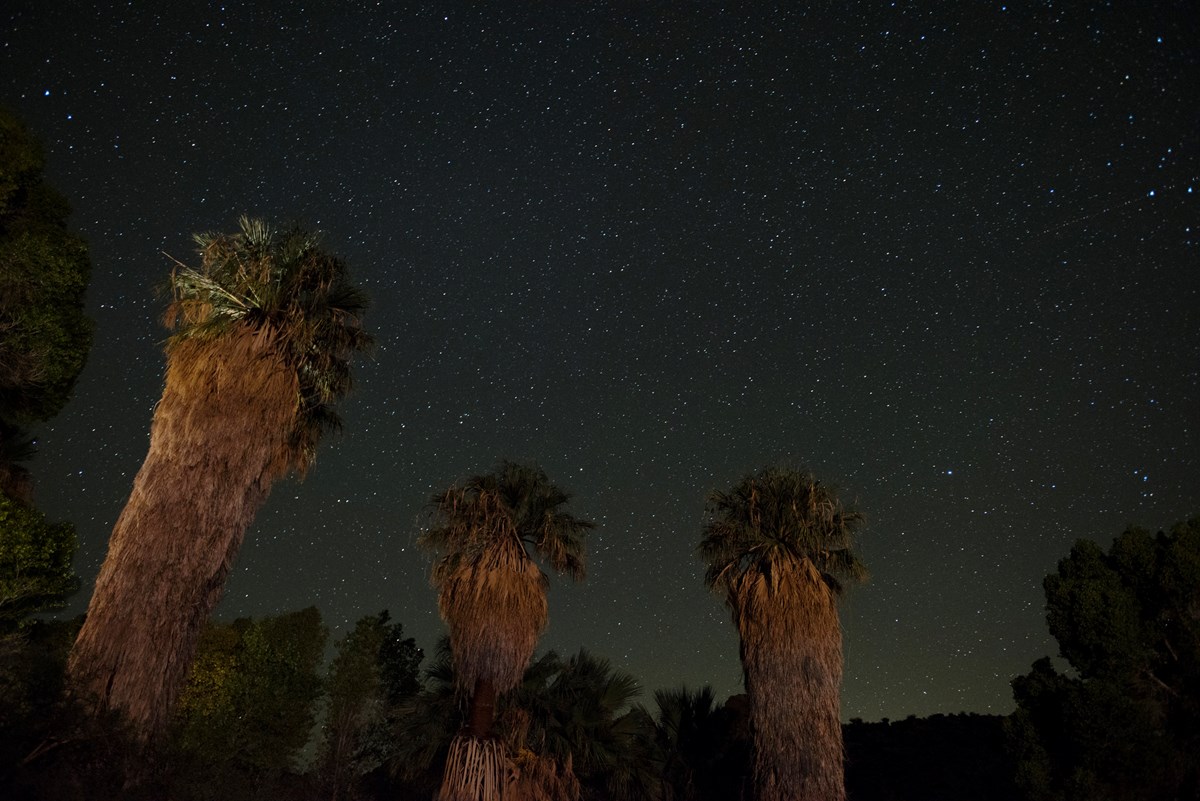
The Great North American Deserts of the southwestern United States and northern Mexico are vast arid regions where a highly diverse population of plants, animals and even humans have adapted to the region's lack of annual rainfall. But occasionally within these arid lands, the groundwater table meets or even breaks through the surface and creates unique islands where life not only survives but thrives.
Shown here is a nighttime view of one such place known as Cottonwood Springs Oasis, which is located in California in Joshua Tree National Monument.
Natural pools
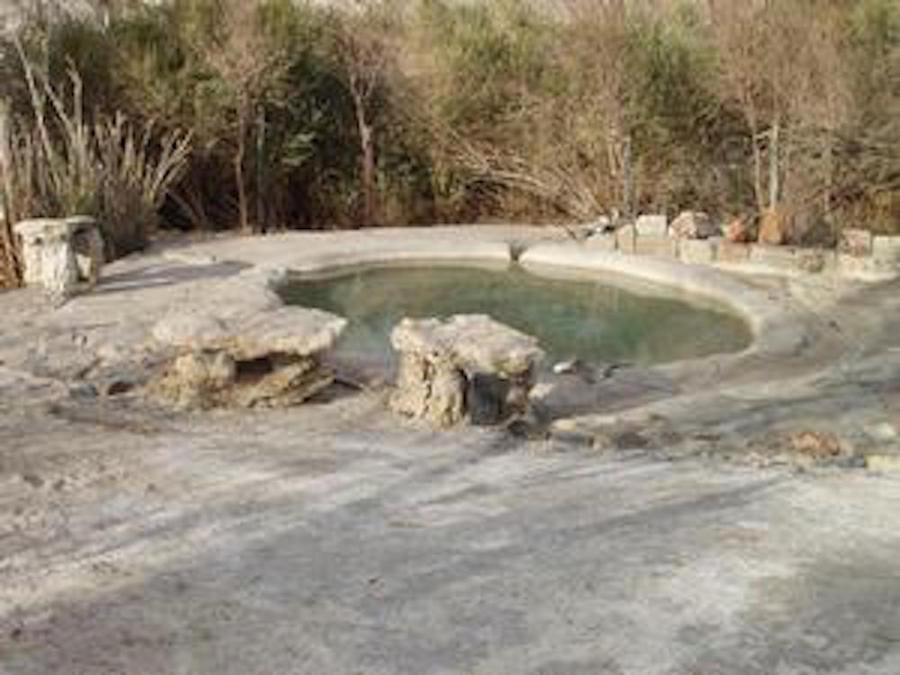
Even in the continent's hottest and driest place — Death Valley National Park of the Mohave Desert — natural pools of water can be found in the remote section of the park known as Salina Valley Warm Springs. Once this area was dominated by salt and borax miners; but today, this hard-to-reach place is the quintessential oasis in the desert, with tall palm trees and human-made soaking tubs like the one shown here.
Botanists tell us that across the North American deserts, there are only 158 desert fan palm oases — with Cottonwood and Salina Valley Springs being two of them.
Remote watering hole
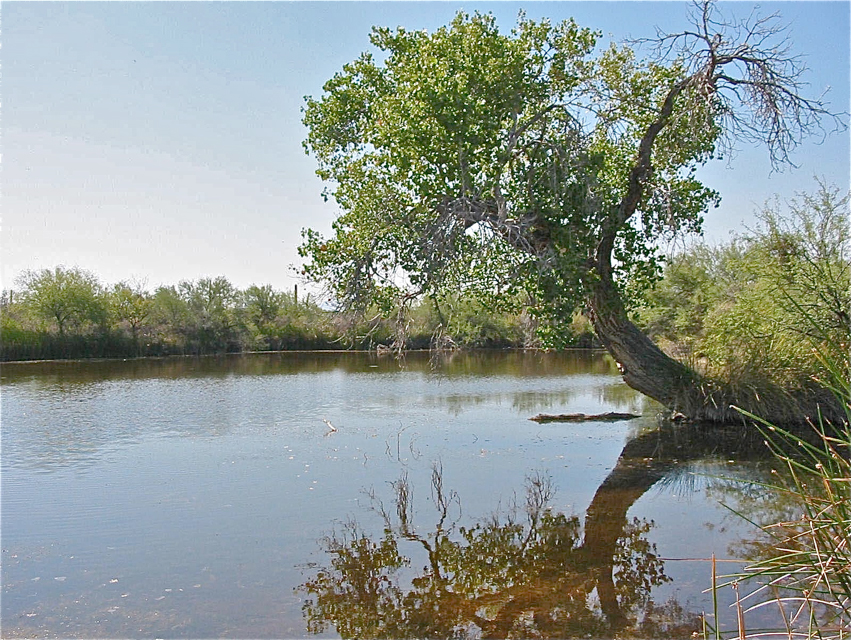
One of North America's most unique desert oases is called Quitobaquito Springs. Quitobaquito, (key-toe-bah-key-toe) was described by a National Parks' researcher as an "ecological singularity, as everything there stands in sharp contrast to its surrounding."
Here, in one of the most remote and driest areas of the Sonoran Desert, a lush oasis of trees and grasses surround a small pond and provide life-giving water for a vast variety of desert wildlife.
Water source
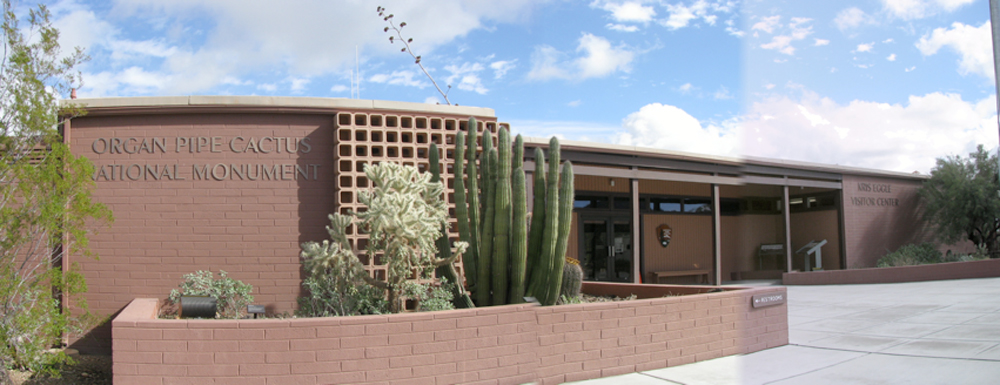
Today, Quitobaquito Springs is near the southwest corner of the Organ Pipe Cactus National Monument, a 333,688-acre (133,825 hectares) biosphere reserve that shares the international border with the Mexican state of Sonora. In fact, Quitobaquito Springs is only 200 yards (182 meters) north of the international border. The spring flows to form a small, shallow pond, which is the last freestanding water source in this part of the Sonoran Desert until the Colorado River, some 120 miles (370 kilometers) to the west. It is believed to be the longest stretch of waterless land in North America's deserts. Even in Death Valley, a drinkable source of water is never more than 20 miles (32 km) away.
Fresh water
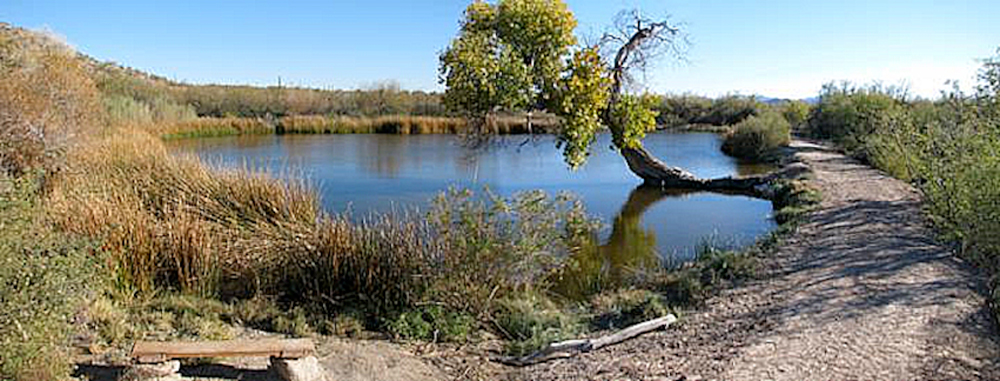
The meaning of the name Quitobaquito is lost to history. Onomatologists, individuals who study names, believe Quitobaquito is a corruption of the Spanish and local native O'odham languages with meanings ranging from "little spring" to "house-ring spring."
What is a known fact is that Native American people have used Quitobaquito as a source of freshwater since at least 11,000 B.C. Quitobaquito also was a critical watering stop along El Camino del Diablo, the "highway of the devil,” for such early Spanish explorers as Father Eusebio Francisco Kino, Melchor Díaz, Father Francisco Tomás Garcés and Juan Bautista de Anza during the 17th, 18th and 19th centuries.
An original source
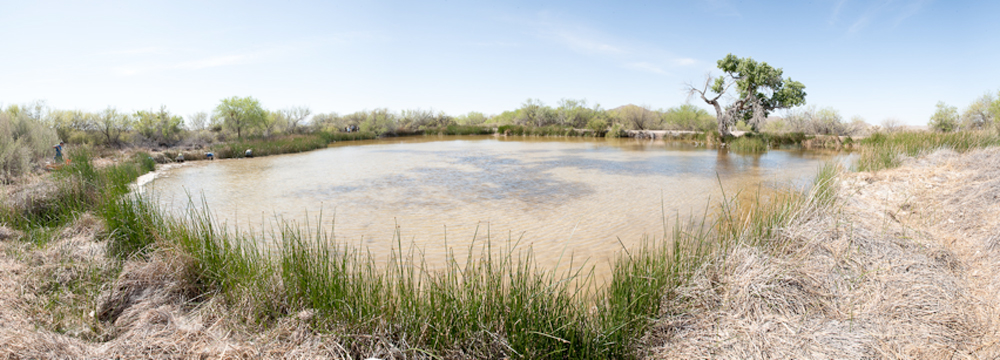
The source of fresh water for the Quitobaquito Springs is the Rio Sonoyta aquifer, which is jointly shared by Mexico and the United States. The water originates from a fault in the granite-gneiss cliffs of the nearby Quitobaquito Hills and the Agua Dulce Mountains.
Surprisingly, there appears to be little or no correlation between the monthly average discharge of water from Quitobaquito Springs and total monthly rainfall, a 1996 report from the U.S. Geological Survey found. This would indicate that there is, and has been for centuries, a sufficient flow of groundwater. Hydrologists contend that the water from Quitobaquito Springs is less than 2,000 years old and likely comes from local sources.
Old canals
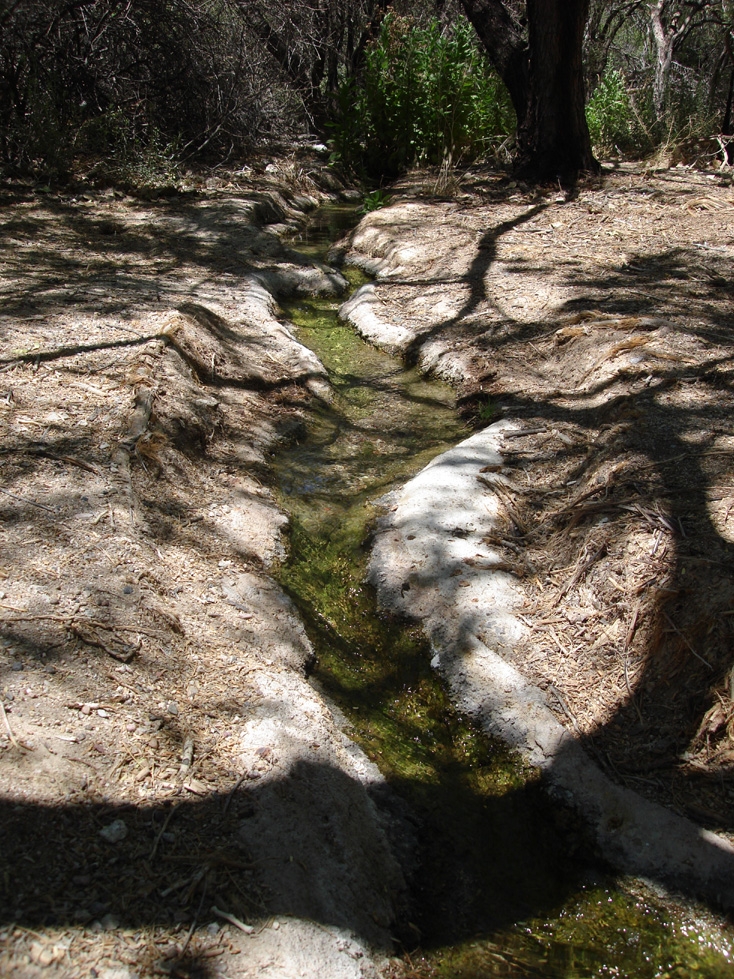
This geological fault allows for the deep, underground water to be pushed up through a series of natural granite cracks. Once at the surface, the water originally ran along naturally sloping ditches that formed small standing pools of fresh water.
Beginning in the mid-1860s, a settler at Quitobaquito Springs named Andrew Dorsey changed this system by building an earthen dam and creating a small pond. He then built a series of irrigation canals to carry this water to his fields of pomegranate and fig trees. A modern day, cement-lined flow canal from Quitobaquito Springs is shown here.
Sign up for the Live Science daily newsletter now
Get the world’s most fascinating discoveries delivered straight to your inbox.
Rare species
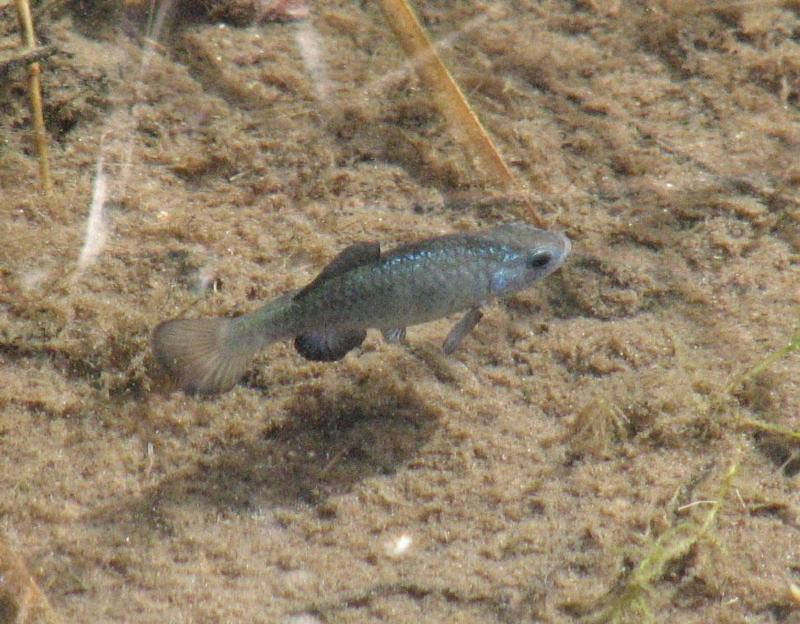
Over 270 species of plants, over a hundred species of birds and uncountable numbers of insect species count on Quitobaquito Springs as the only source of life-giving water in this vast sea of endless deserts. The pond's most famous residents are the Quitobaquito pupfish, Cyprinodon macularius ememus, shown here.
This up to 2-inch-long (5 centimeters) fish is locally known as the Sonoyta pupfish and is one of the most distinct species of its genus. The adults are aggressive omnivores eating mosquito larvae, small invertebrates and even their own eggs and young. They have a unique ability to live in water that is very hot (upward to 113 degrees Fahrenheit, or 45 degrees Celsius), very concentrated with salt (twice that of seawater) and low in dissolved oxygen concentrations. Quitobaquito pupfish only live in the pond at Quitobaquito Springs and are considered an endangered species.
Native animals and plants
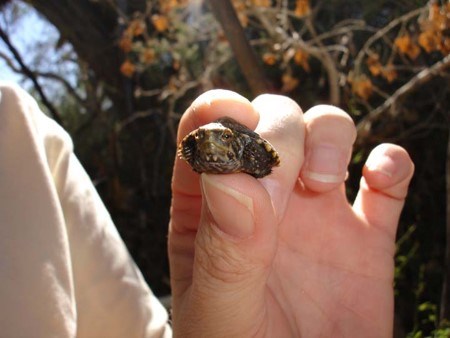
Amazingly, the small Quitobaquito Springs is also the native home to several other species of unique and endangered animals and plants. The Sonoyta mud turtle, Kinosternon sonoriense longifemorale, whose is young shown here, is now only found naturally in the United States in this rare desert oasis environment. These small reptiles, with their webbed feet and innate ability to swim, have evolved in one of the driest places in North America.
Quitobaquito Springs is also the only natural habitat in the United States for the black-pepper-grain-size Quitobaquito snail, Tryonia quitobaquitae and the desert caper plant, Atamisquea emarginata.
Making it home
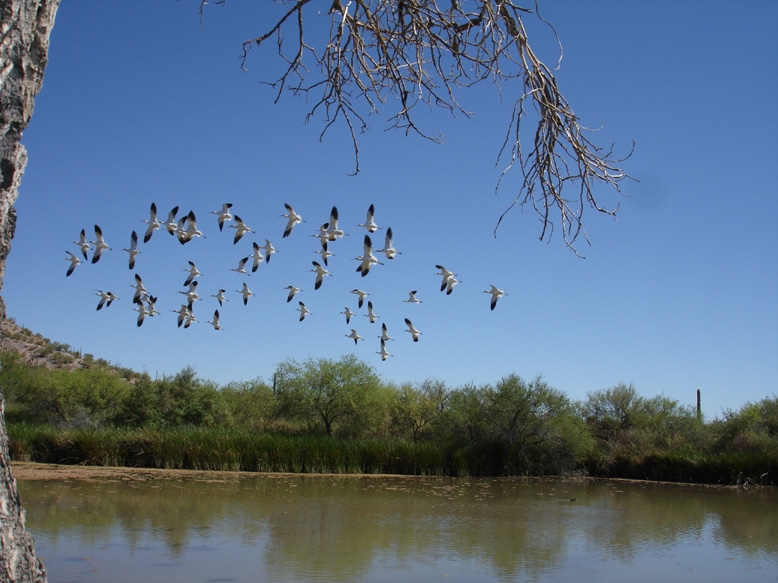
explains why this area has the highest number of bird species found in the Sonoran Desert. Some 73 species of birds requiring open water and/or marshland have been documented. Some 21 species of ducks and geese, four species of grebe (a freshwater diving bird), seven species of heron and egret, 19 species of "shorebirds" and nine species of gulls spend time in and around the pond at Quitobaquito Springs.
Shown here, a flock of American avocets, Recurvirostra americana, fly over Quitobaquito Pond.
Local trading system
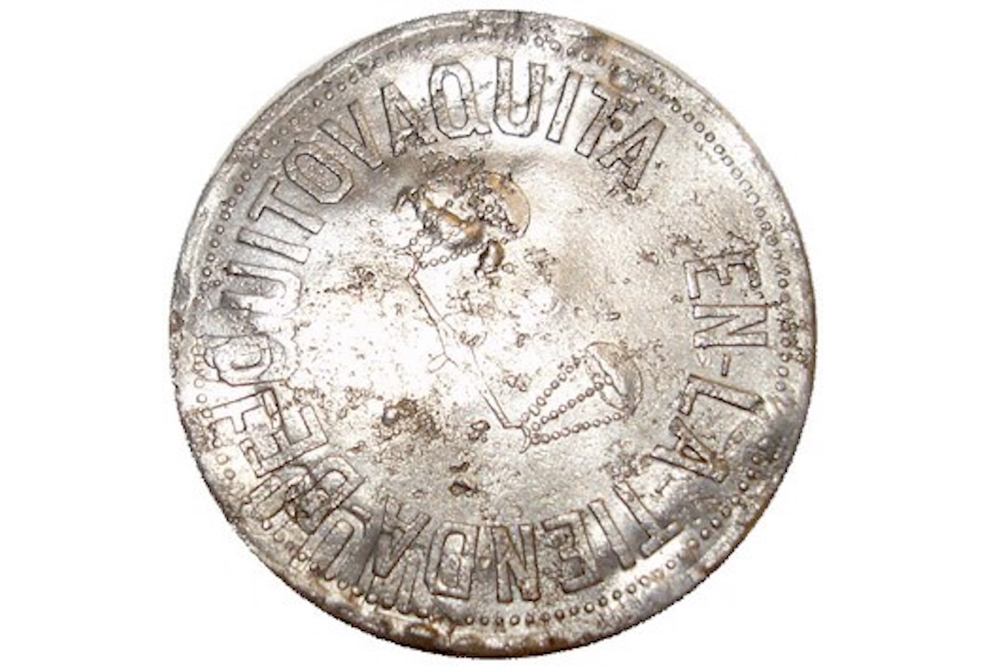
The prehistoric trade route — known as the Old Salt Trail — passes by the Quitobaquito Springs. Native American people used this route for centuries as they passed by the oasis in search of obsidian, seashells and salt from the large salt beds found in Sonora, Mexico. Both the Hia C-ed O'odham and the Tohono O'odham people of today claim the oasis as a part of their historic homeland. The before mentioned Andrew Dorsey even opened a store near the springs and created a system of trading coins, like the one shown here, for the local people to use.
In 1957, Jim Orosco, a member of the Hia C-ed O'odham tribe, sold all of his remaining private land at Quitobaquito to the National Park Service for $13,000, ending his family's ownership of that land, which had begun in 1887.









